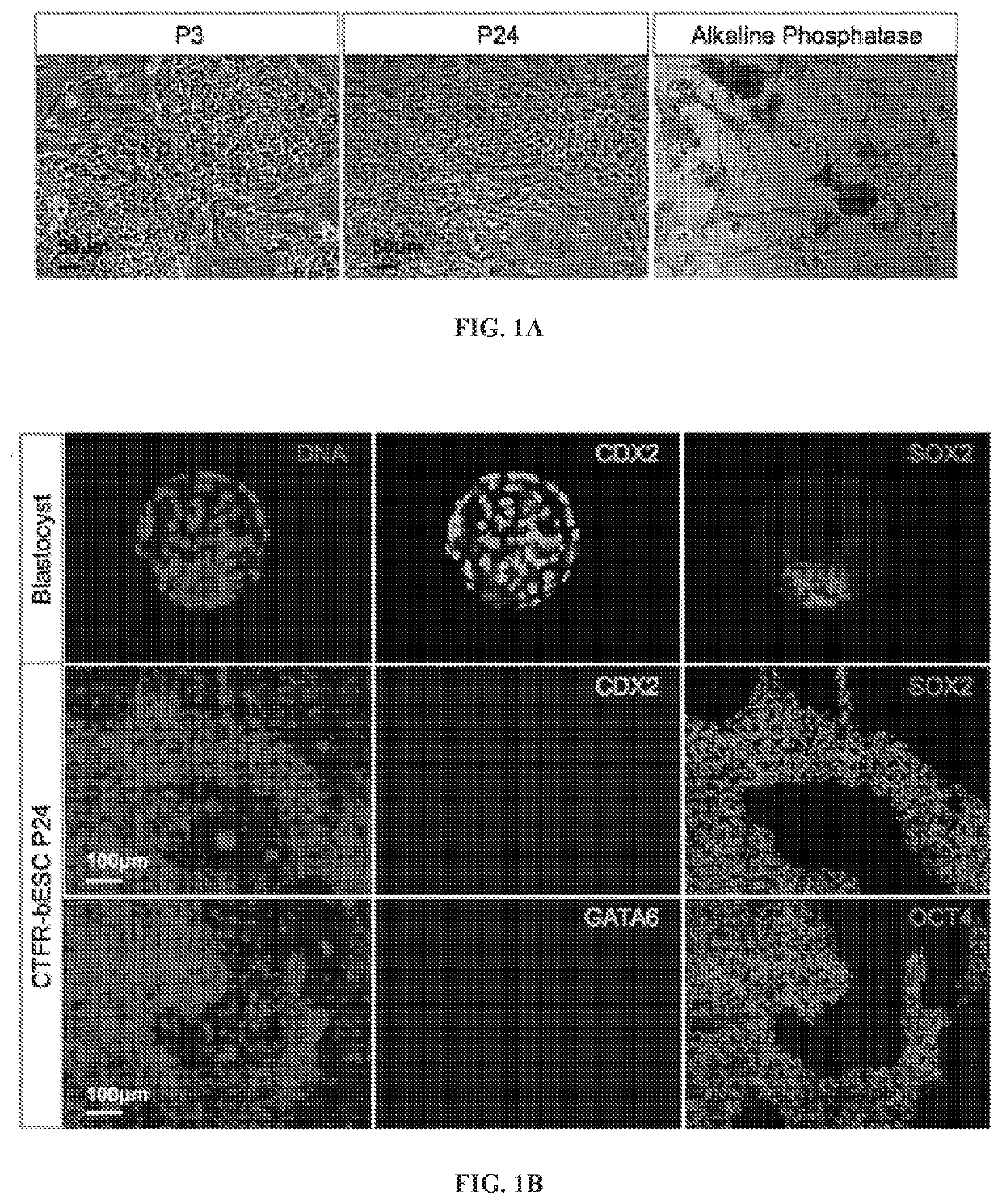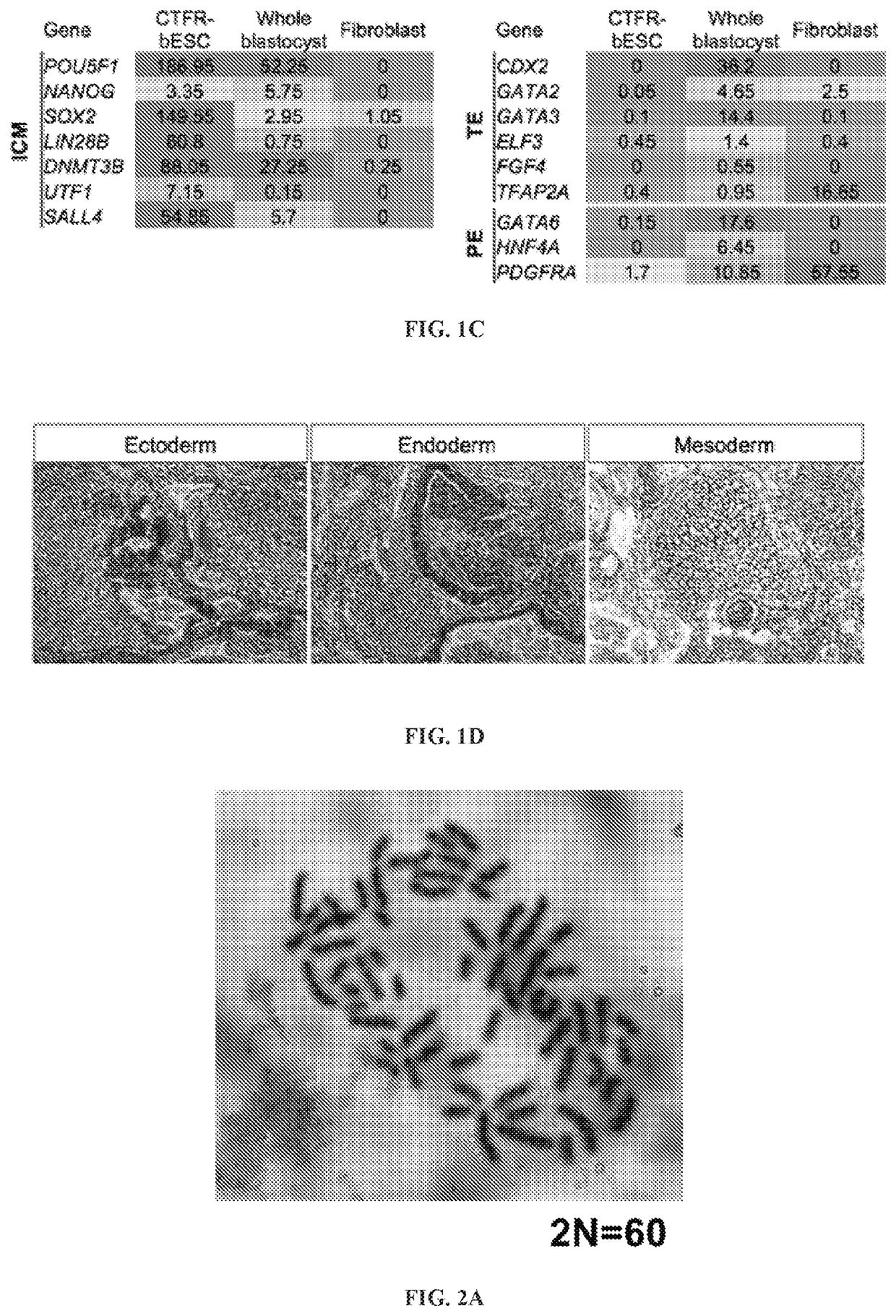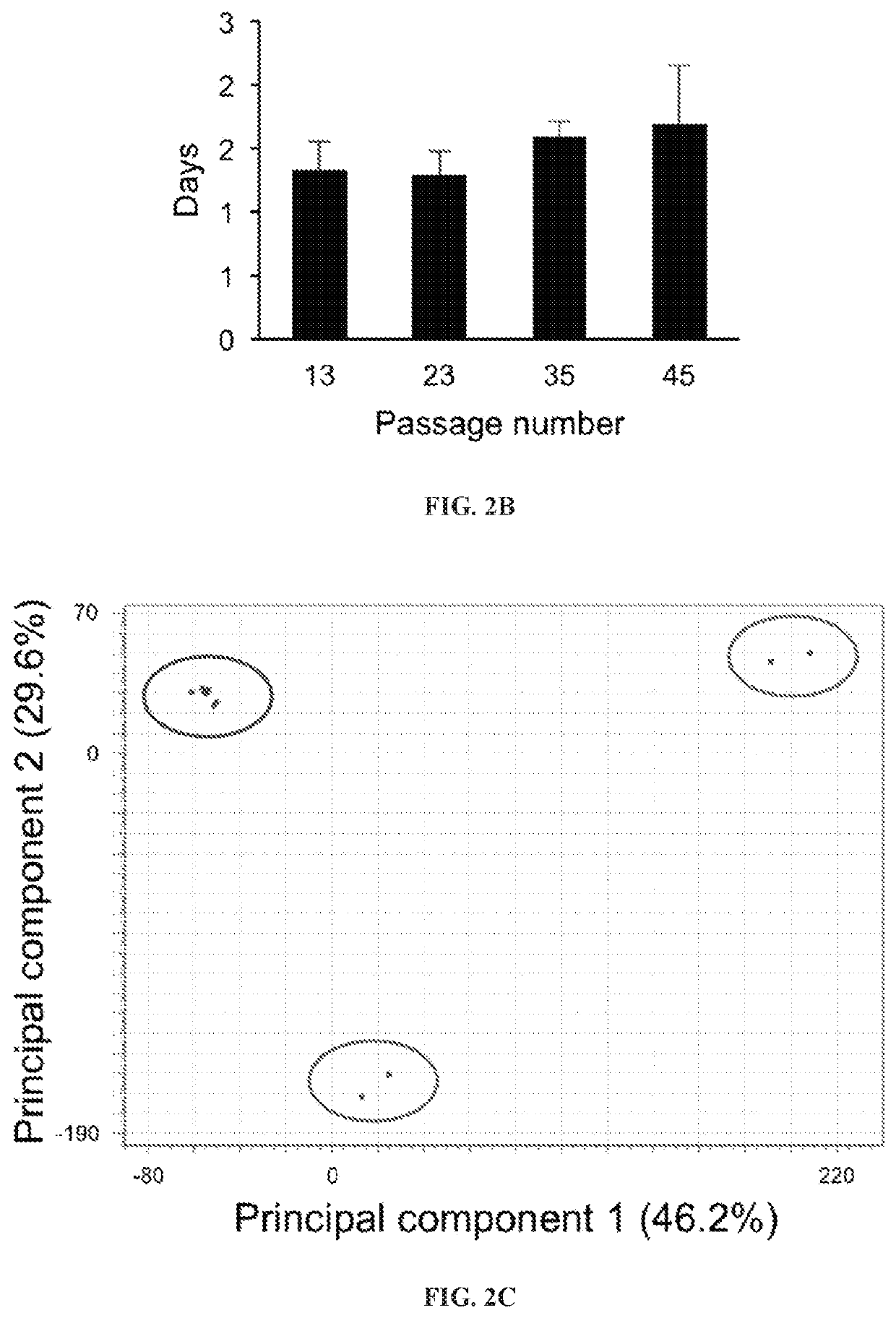Efficient derivation of stable pluripotent bovine embryonic stem cells
a bovine embryonic stem cell and efficient technology, applied in the field of efficient can solve the problems of limited proliferation capacity, poor derivation efficiency, and difficult derivation of stable pluripotent bovine embryonic stem cells (escs)
- Summary
- Abstract
- Description
- Claims
- Application Information
AI Technical Summary
Benefits of technology
Problems solved by technology
Method used
Image
Examples
descriptive embodiments
Methods for Producing Stable Embryonic Stem Cell
[0084]Provided herein are methods for producing stable ungulate embryonic stem cells (ESCs), the methods comprising, or alternatively consisting essentially of, or yet further consisting of culturing an ungulate blastocyst cell or a pluripotent cell isolated from an ungulate embryo, in a cell culture media, the cell culture media comprising: (i) inactivated feeder cells; (ii) an effective amount of Fibroblast Growth Factor 2 (FGF2) or an equivalent thereof; and (iii) an effective amount of one or more of an inhibitor of Wnt signaling. In one aspect, the ungulate blastocyst, the pluripotent cell or the ESC is bovine or ovine. In a further aspect, the blastocyst cell, the pluripotent cell or ESC is detectable labeled.
[0085]The methods as disclosed herein use the disclosed compositions and culture conditions for the establishment of ungulate ESCs (e.g., bovine embryonic stem cells) that are pluripotent, easy to propagate using single cell...
example 1
[0117]CTFR Medium Supports Derivation and Long-Term Culture of Pluripotent bESCs
[0118]bESCs were derived, propagated, cultured, and subjected to several rounds of freezing and thawing in serum free Custom TeSR1 base medium (without growth factors) supplemented with FGF2 and IWR1 (herein referred to as “CTFR”) conditions. Cell lines could be established by the end of week 3 after ICM / embryo plating and remained unchanged for more than 50 passages (FIG. 1). Unlike human ESCs and mouse EpiSCs, CTFR-bESC did not show round colony morphology with clearly defined edge, but rather grew tightly attached to each other as an interconnected cellular web that was clearly delimited from the feeder layer (FIG. 1A). CTFR-bESCs were positive for alkaline phosphatase (AP) staining (FIG. IA). To assess genetic stability of the CTFR-bESCs after long-term culture, applicants performed karyotyping assay in two different cell lines at passage 34. The results showed a normal chromosome content (n=60) in m...
PUM
| Property | Measurement | Unit |
|---|---|---|
| size | aaaaa | aaaaa |
| time | aaaaa | aaaaa |
| time | aaaaa | aaaaa |
Abstract
Description
Claims
Application Information
 Login to View More
Login to View More - R&D
- Intellectual Property
- Life Sciences
- Materials
- Tech Scout
- Unparalleled Data Quality
- Higher Quality Content
- 60% Fewer Hallucinations
Browse by: Latest US Patents, China's latest patents, Technical Efficacy Thesaurus, Application Domain, Technology Topic, Popular Technical Reports.
© 2025 PatSnap. All rights reserved.Legal|Privacy policy|Modern Slavery Act Transparency Statement|Sitemap|About US| Contact US: help@patsnap.com



